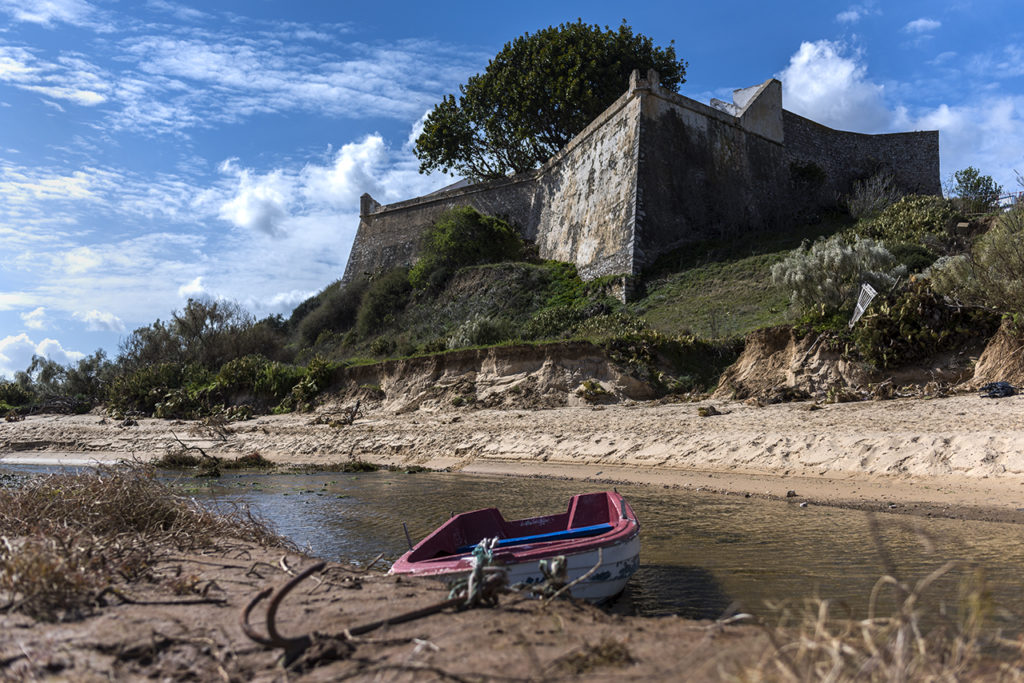
At the top of the cliff, the fortress of Cacela Velha has stood out for centuries. Hundreds of years before it was built, men and women were already busy in the fields around what is now a village in Vila Real de Santo António, Portugal, and in the rich river below, which will have, one guesses, been always beautiful. This heritage – the built and the other, which the sedimentation of time has hidden – may be at risk due to the recent (and growing) exposure of the locality to the force of the sea, aggravated by the storms at the beginning of March, warn those who care for Cacela's historical legacy and confirm who wants to know its secrets.
From Adrip, the local association for the defense of heritage, comes the alert that the bar, which has been open for about eight years, in front of Cacela Velha, is excavating the cliff that supports the fortress, putting it at risk. A situation that worsened as of March 1st. At dawn, a storm, which combined intense winds with strong maritime agitation, took away what was left of the beach, on the other side of the Ria Formosa.
«Right now, the sands are all spread out in the ria. This makes the sea enter and even reach the cliffs», he told the Sul Informação António Vicente, from Adrip – Association for the Defense, Rehabilitation, Research and Promotion of the Natural and Cultural Heritage of Cacela.
“There has been an increase in the flow of water since the bar was opened. It has been accompanied by an overtopping of the primary dune, the spreading of the sands and the total destruction of the dune. In Cacela Velha, it has been noticed the water that comes closer to the wall. For some years now, there is almost no margin at high tide. There is only one area left, where there used to be vegetable gardens, below the cliff,” he added.
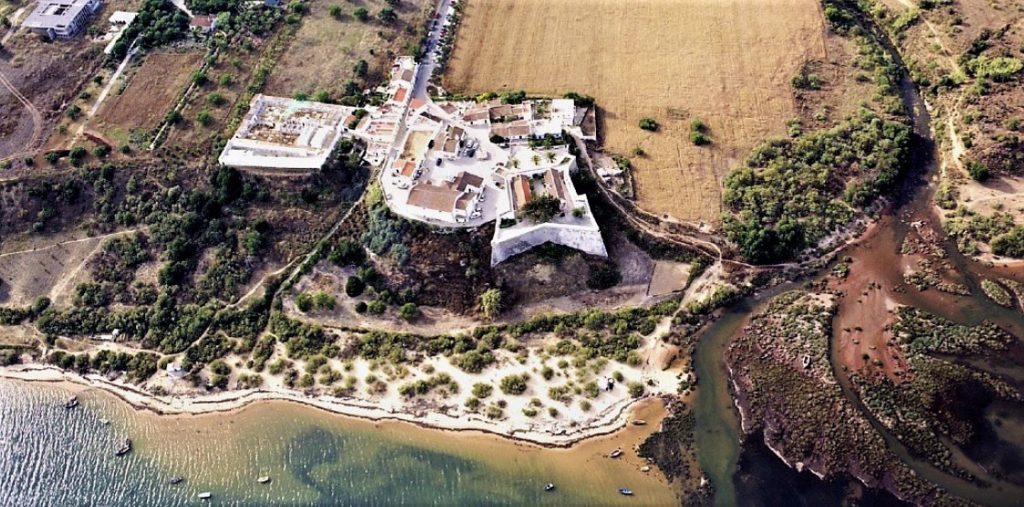
Also concerned, is Maria João Valente, archaeologist and researcher at the University of Algarve, one of those responsible for the archaeological campaign that will start this year and last until 2022, in Cacela Velha. The fact is that, he revealed, the sea that entered the bar at the beginning of the month, has already done damage to the existing archaeological site to the west of the village.
"As a result of recent storms, broken pots and pans [centennial] appeared, there by the cliff, because, of course, as erosion progresses, it enters through the archaeological site," explained the researcher, to the Sul Informação.
The potential risk to the existing heritage in this small Algarvean town, whose whole, reminds Adrip, «is classified as of Public Interest», became more evident from the moment the sea left its marks, about three weeks ago. But the problem is not new.
“This is a process that has already taken eight years. In 2010, we questioned the municipality about the opening of this bar in front of Cacela, which we were sure would be a mistake. We were always told that this operation was going to be monitored by the Portuguese Environment Agency, by the University of the Algarve and by Organs competent bodies, but what is certain is that so far there has been no control whatsoever. If there was, it stayed in drawers, no one has ever done anything», guaranteed António Vicente.
The University of Algarve may not have monitored the effects of the opening of the bar, but it has been paying close attention to Cacela Velha and its heritage. Days after the storm had excavated the cliff in Cacela – it left marks on various points along the Algarve coast – the University, the Regional Directorate of Culture and the VRSA Council announced that the archaeological excavations were going to return to this village.
Maria João Valente is one of the researchers responsible for this new campaign, which aims to deepen the work launched by Estácio da Veiga, still in the 90th century, and which were deepened in the XNUMXs of the last century. This makes me not to look at the erosion of this point of the Algarve coast lightly.
«The human occupation of the Algarve is very marked by the coast. The coast has always been very attractive, since prehistory. Many of our oldest occupations are coastal. As the coast erodes, it is obvious that the archaeological sites are very affected», said the archaeologist.
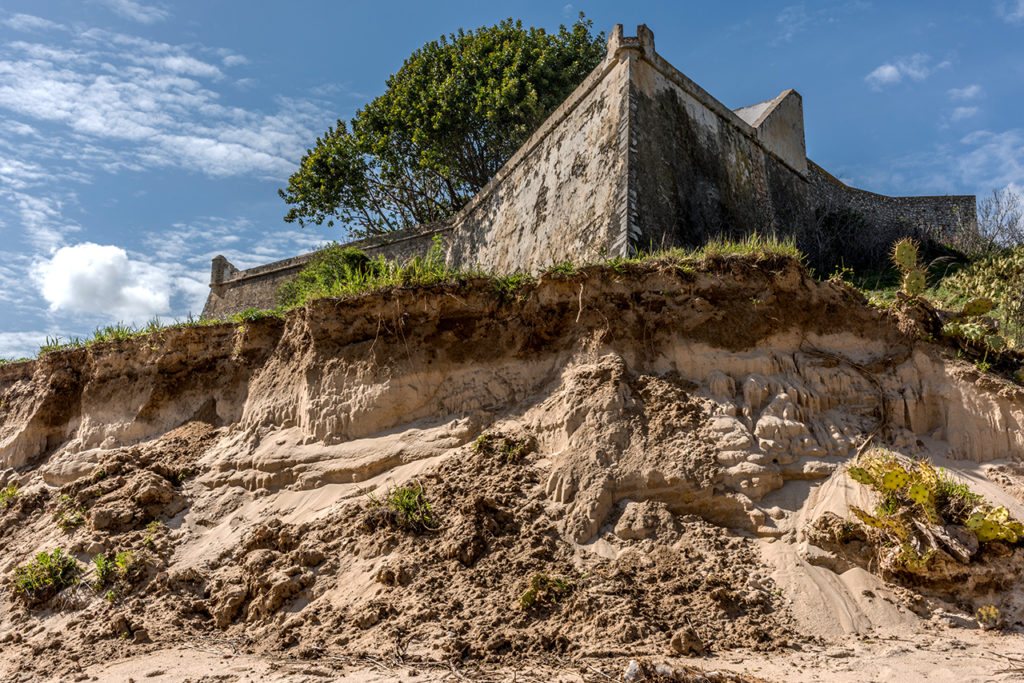
In the particular case of Cacela, says Maria João Valente, there are three major issues. «From the start, there is the problem of the natural heritage, not only at the level of the bar itself, but also of the fossiliferous deposit that exists in the river», which runs along the east side of the fortress.
At the historical-archaeological level, there are two problems: «one has to do with the positioning of the fortress, which is very much on the cliff. That is, as the cliff becomes food, the greater the danger for the fortification and even the fall of elements».
“Another problem is the archaeological site down here. Because that one, as we could see, is being eroded. It turns out to be an excavation that is not controlled, that goes on destroying. In this regard, what is happening is very worrying», stressed the researcher from UAlg.
Maria João Valente also explained that Cacela Velha «is important from a historical point of view, from the perspective of the fortress, which is a slightly later construction, from the XNUMXth century, but also has a whole history of the medieval period – and probably , even Roman – which remains to be discovered».
The place where important archaeological campaigns took place and where new works will be carried out, starting in the summer, is next to the so-called “path of the fort”, which descends from the village to the estuary, the source of the urban nucleus, and ends at the mouth of the stream , the one that houses fossils.
It was precisely in this area that the sea most excavated the cliff. as the Sul Informação he found the sea on the spot, at one end of the fortress, he ate the land, leaving it just a meter from where the water now reaches. In the area where the archaeological site begins, erosion is also evident.
“I had a nursery support next to the path to the fort, which was taken during the storm because the water got there. When the dune existed, this did not happen», told our newspaper Jorge Minhalma, the last producer of oysters in Cacela Velha, who gave up on this activity in the wake of this storm.
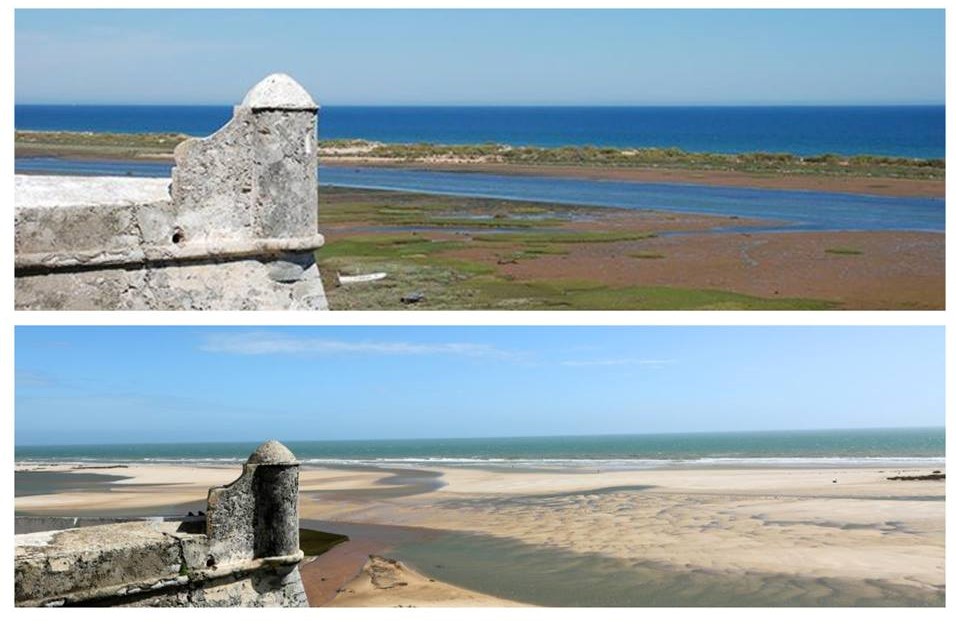
Because, as António Vicente, from Adrip illustrated, in addition to issues related to heritage, there is also a problem «from the socio-economic point of view, the nurseries and those with activities related to the estuary».
António Vicente and Jorge Minhalma attended a meeting with the mayor of Vila Real de Santo António, where they presented the documentation they have been collecting over the years, in order to raise awareness of the problems experienced in Cacela.
Speaking to our newspaper, Conceição Cabrita said that she has already asked for an urgent meeting with the minister of the Environment, to talk about this issue. “We have to think about what we want to have there in Cacela, if we want [beach] tourism or maintain the local heritage. In my opinion, we must keep the heritage».
Maria João Valente says that there are two problems: “one has to do with the positioning of the fortress, which is very high on the cliff. That is, as the cliff becomes food, the greater the danger for the fortification and even the fall of elements"
However, the matter has also been taken to the Assembly of the Republic by the PSD parliamentary group. Five Social Democratic deputies, including the two elected by the Algarve constituency, José Carlos Barros and Cristóvão Norte, they asked the Government to proceed with "emergency measures on the coastline of the Algarve, with special attention to risk situations", in terms of heritage, namely in the «worrying case of the Fortress of Cacela Velha, affected by an ancient erosive process, which the severe weather conditions of the last few weeks have aggravated».
The Minister of Environment, on a recent visit to the Algarve to see on-site visit the damage caused by the weatheral, said he was not aware of the situation. The Regional Directorate of Culture of the Algarve also guarantees that it has not yet been alerted to the potential risk in the classified set of Cacela Velha, guaranteeing that, if it exists, it will go to the site to carry out an assessment.
For his part, Sebastião Teixeira, regional director of the Portuguese Environment Agency, told the Sul Informação that this organism will still go to the site to investigate, in depth, the damage caused by the storm. As for the risk to the heritage, this responsible recalled that, "over the centuries, the bar has been opened many times in front of the fortress".
But this is an argument that doesn't work with heritage defenders and those who live in the Ria Formosa, in Cacela Velha. They ask that the barrier island be replaced in front of the village and the bar opened elsewhere, as was the case a few years ago.
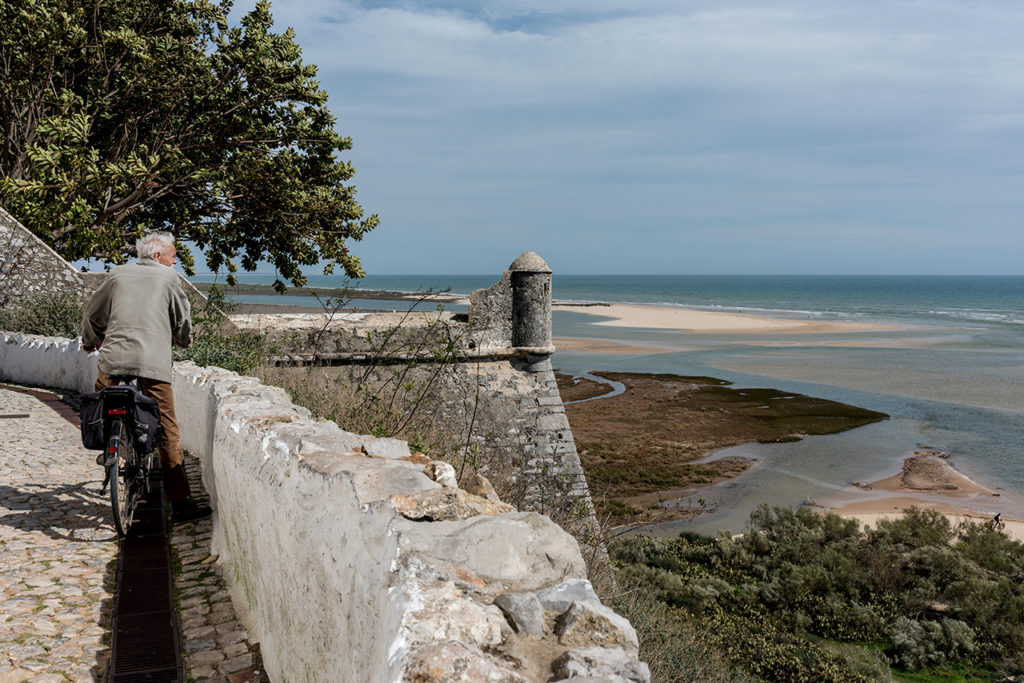


















Comments